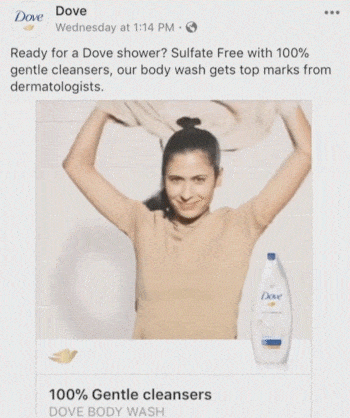4 Ways The Skin Care Industry Is A Nightmare

Everyone has a different image that comes into their head when they think of skincare. For some, visions of luxurious models and mysteriously glistening influencers seize the imagination; there is a sunrise, a diamond-like spate of water, and a woman who is orgasmic about the idea of clear skin. In these images, skincare is a fountain of promises, a deity that gives you confidence, the social currency of beauty, and a symbol of health that will transform your damp apartment cave of rats into a sunny chateau strewn with rose petals.
For others, the very phrase "skincare" invokes traumatic visits to dermatologists and an endless stream of broken promises and discarded bottles. In its least ideal forms, skincare enthusiasm can take shape as unsolicited advice from people who've never had a chronic skin problem and a culture of comparison and ageism that makes even the most confident person feel like a sad ogre drowning in a swamp of inadequacy. At its best, it can encourage people to slow down and take care of their bodies, cultivate attention towards themselves, and have fun going to town with all the bizarre face goos and lasers.
Don't Miss
Regardless of whether you hoard serums like a beauty doomsday prepper or you can barely remember to wash the day's despair off your face, there is one thing we can all agree on: the skincare industry is so massive it's practically omnipresent. While the goliath clutch of skincare feels more acutely obvious in the age of targeted Instagram ads, the obsessive advertising and dystopian treatments are part of a long and nightmarish tradition. As with most industries running under capitalism, the skincare industry has historically prioritized money over customers' well-being or the types of messages sent into the ether. So if you've ever felt Hitchcockian while putting on your moisturizer, it's not in your head. There are some valid reasons the industry is a nightmare ...
The Ingredients Sound Like They're Straight Out Of A Serial Killer's Diary
If you met someone on the sidewalk shaking a vat full of nightingale poop and snail secretions, claiming they were the promise to glowing skin, you'd likely cross the street and send up a prayer for them. And yet, the beauty industry constantly shills ingredients that sound like they'd usher in a cursed spirit or at least a case of gangrene.
For starters, snail slime is full of mucin extract, which includes proteins, glycolic acids, and elastin that all boast the ability to regenerate and moisturize skin, and people happily pay up to $700 for a cream. When you consider the image of someone pulling slime from a snail to sell to you for hundreds of dollars, it's both sadistic and absurdist.

... sounds like a hilarious joke caption, but it's the actual name of this product
But snail slime feels almost adorable when you compare it to the popularity of nightingale poop facials (the next time a bird shits on you call it a spa day), Vampire facials that use your own blood as a mask (this was surely invented in a deleted scene from What We Do In The Shadows), or the "fire facial" where someone laces an elixir-soaked towel onto your face and then legitimately lights it on fire (Quentin Tarantino wishes he'd invented this).
To be fair, setting your face on fire is a surefire way to prevent wrinkles since, in any unsupervised context, it could kill you. The fact that the skincare boom has groomed us to barely blink at these measures is truly Machiavellian. Still, setting your face on fire to traumatize it into anti-aging isn't even the furthest enclave of skincare. There is a brand that harvests the foreskin of human infants in order to provide skincare (Oprah has tried it), there are Buccal facials where people pay to have a stranger slap the insides of their mouths dental style in order to reshape their cheeks, and of course, ingredients like oil scooped up from shark liver (squalene) are so common it's probably in your lotion.

While all of these individual treatments sound like they were plucked from Patrick Bateman's diary, we can at least say we've come a ways from back when women used londinium (a lead-based powder) around their eyes and soon started losing teeth and keeling over. Or when women used molten wax eyelash beads that burned their eyes and set one woman on fire.
The Ads Are More Ominous Than A Dark Alley Full Of Shadows
Advertising is by nature manipulative, so it's not a shocker that the skincare industry is no exception. The combination of highly gendered marketing campaigns and an eerie obsession with infant-like skin goes some creatively dark places. One prime example is the 1951 Dorothy Gray Salon campaign emblazoned with the ultimate question: "Does your husband look younger than you?"

The question, while basic enough in nature, is posed as a catastrophic threat. The mere idea of a husband looking younger than his wife is considered as terrifying as a home invasion or a nuclear threat. This ad makes it clear that a woman who looks older than her husband must take action immediately before the walls turn to blood, and his gaze turns towards a fresh wife.
In their same brand image of thinly veiled threats, the very same Dorothy Gray Salon also released an ad where a model's face was lightly powdered in radioactive dirt in order to properly test a cold cream.
To be fair, it’s important to keep your nightly routine on point even when your city is in ashes.
The sinister nature of skincare ads certainly didn't stop with the 1950s black-and-white horror aesthetics. The eerie contrast between glowing smiles and menacing subtext is still alive and well. Perhaps one of the best recent examples was the infamous Dove ad, where a black woman removed her brown shirt to reveal a white woman wearing a lighter-colored shirt. Regardless of the intentions by Dove, the soap ad's sequence gave many people the subtext of "washing yourself to whiteness."

While there were plenty of varying and nuanced takes, one of the reasons the ad hit such a sore spot was because it reminded people of a long history of racist skincare ads that used the "before and after" template to promote whiteness and insinuate all other shades are dirty.
In many ways, the radioactive dirt ad feels quaint and charming compared to the skincare industry's direct and constant contributions to white supremacist messaging.
The Skin Care Devices Look Like Sci-Fi Torture Devices
The skincare industry bats a million when it comes to creating devices that look like they'd sit on Freddy Kreuger's nightstand. The endless march towards perfect skin has included so many potential weapons it's a shock the U.S. government doesn't subsidize the entire industry.
Among the heavy-hitters for "most threatening contraption to attach to your body" was the 1940s vacuum skincare helmet known as the "glamour bonnet." This makeshift helmet boasted its ability to reduce the air pressure around your head, so skincare enthusiasts could LARP the experience of gently suffocating on a mountain. According to lovers of the bonnet, the lack of air pressure encouraged blood to circulate faster, making them look more youthful while simulating altitude sickness.
Another contender for "most likely to be included on Stanley Kubrick's Pinterest mood board" is the "toilet mask." Aside from having the marketing appeal of a mysteriously damp bus seat, the toilet mask managed to induce terror, first appearing like a run-of-the-mill face mask (to our modern eyes, a sheet mask). But upon closer inspection, it resembles a mask strapped onto your head by one of the mean adults from Matilda.
It's hard to top the pure torture aesthetic of freckle removers from the 1920s and 1930s, where patients would sit with a metal contraption kissing their eyeballs while a machine zapped off an entire layer of skin in order to remove freckles. If freckles are kisses from the sun, then the skincare industry is a middle finger from hell flipping off our freckles.
Female Business Owners Were Cut Off At The Knees (Metaphorically, Don't Worry)
In 2020, research showed that female skincare specialists make 290.6% as much as male skincare specialists, and skincare was listed as the number one job where women get a juicier cut of that sweet cash flow. While this is a pleasant fact on its lonesome, for many years, women's success in the skincare industry was about as stop-and-start as The Fast and the Furious franchise. But that's not due to a lack of women ready to capitalize on cold creams.

As the flapper look took over in the 1920s, and the concept of being a "painted woman" became more mainstream, a lot of women ran small companies selling skincare products to friends, neighbors, and enemies alike (go ahead and rub that arsenic into your eye, Cheryl). But when the industry grew, those small female-owned companies got swallowed up by larger corporations due to "changing business models" (the ultimate dog whistle for a soulless takeover).
Basically, in order to stay in the game, you had to wholesale bargain with male-owned chain drug and department stores, and they mostly didn't want to work with women. So by 1930, a small handful of companies had control of 40% of the cosmetics and skincare industry. This shift in business dealings had effectively knocked back the women who were in on the ground floor of the industry, and while it's impossible to know how differently things would have grown, the economic impact of more women with that mobility would've been compelling. After all, if women are going to see ads that tell us to set ourselves on fire, melt our faces off, and get strapped into Clockwork Orange captivity in order to keep up our glow, then we should absolutely get paid in full.

Suffice it to say, the skincare industry has been a nightmare for a long time, but that doesn't mean it can't still be dreamy too. Sometimes, you just need a bird to shit on your face in order to feel your best, and we've got that easily available now.
Top image: Jllm06/Wiki Commons
